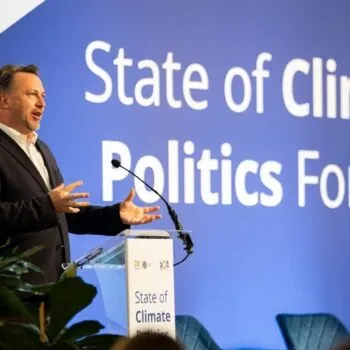The Commission may have put forward some ideas on how Europe can get a deal in Paris, but this is only the start if we’re to manage climate risk for European and global citizens.
Europe’s Adaptation Report Card
In practice the EU invests in resilience abroad, but inside UN negotiations the EU is struggling to align its policies. For example, the UK department for international development (DFID) is undergoing organisational reform to make their operations future fit for a warming climate. However, within the UNFCCC whilst Europe’s traditional allies such as the LDC’s, AILAC and AOSIS are demanding more action to manage climate impacts this is falling on deaf ears. The EU is struggling to know how to respond.
But at home Europe is behind the curve when it comes to adaptation. The EU does not engage in coordinated approaches to adaptation despite the considerable benefits of cross-border climate risk management. Member-states predominantly engage in adaptation through the deployment of ‘National Adaptation Plans’ (as outlined by the UNFCCC) but only 18 of the EU’s 28 members have such a plan. [1]
And whilst countries with a plan have an advantage, they do not always serve as a guarantee for action. Many of Europe’s cities report that they do not serve the local or regional context for resilience planning. [2] As such, UNFCCC collaboration has improved Europe’s performance on adaptation but it has not gone far enough. Europe’s citizens remain exposed to impending climate risks and Paris must be seized as an opportunity to change tack.
It’s not all about the money
Inside negotiations there has been a drift toward finance as the definitive answer to adaptation. This drift has disconnected the adaptation debate away from the necessary realities of building resilience in a warming world. It has empowered the forces that use finance as an opportunity to block negotiations and disempowered Europe whose current political and economic context makes climate finance a sticky issue.
A financial resolution will have to be reached; money must be channelled for adaptation. However, money alone will never be sufficient to adapt to climate change. To successfully adapt to the changing climate and prepare for uncertainty, institutional reform is unavoidable. National and international institutions are becoming unfit for purpose in our warming world. For Europe this means realigning planning and investment at home and abroad. Structuring decision-making to mitigate for 2°C, build for 4°C and prepare for 6°C. The Paris agreement is an opportunity to kick-start these reforms, for Europe to demonstrate its commitment to resilience.
What next for Europe?
Paris can put us on a pathway to 2°C but it will not deliver a slam dunk 2°C outcome. The regime agreed in Paris will need to endure as the world steers through decades stalked by uncertainty as the implications of a warming climate play out. Incorporating resilience into planning is more important than ever.
In 2015 Europe needs to show that it cares about resilience at home and abroad. Three international negotiations will culminate and contribute to the evolution of the climate risk regime: the Hyogo Framework for disaster risk reduction, the post-2015 sustainable development goals and the 2015 climate agreement under the UNFCCC. Europe needs to articulate the steps it is taking to mitigate, adapt and provide finance to manage climate risk to protect European and global interests. To listen to its allies and learn from best practice to consider which priority reforms need to be implemented. The political calendar is littered with opportunities – from the G7 to CHOGM – for Europe to make its case and the world will be watching.
[1] EEA (2014). Only half of the countries with a NAS have adopted National Adaptation Plans (NAPs) under the UNFCCC. [2] EC (2013a), Partnership for European Environmental Research (2009).


